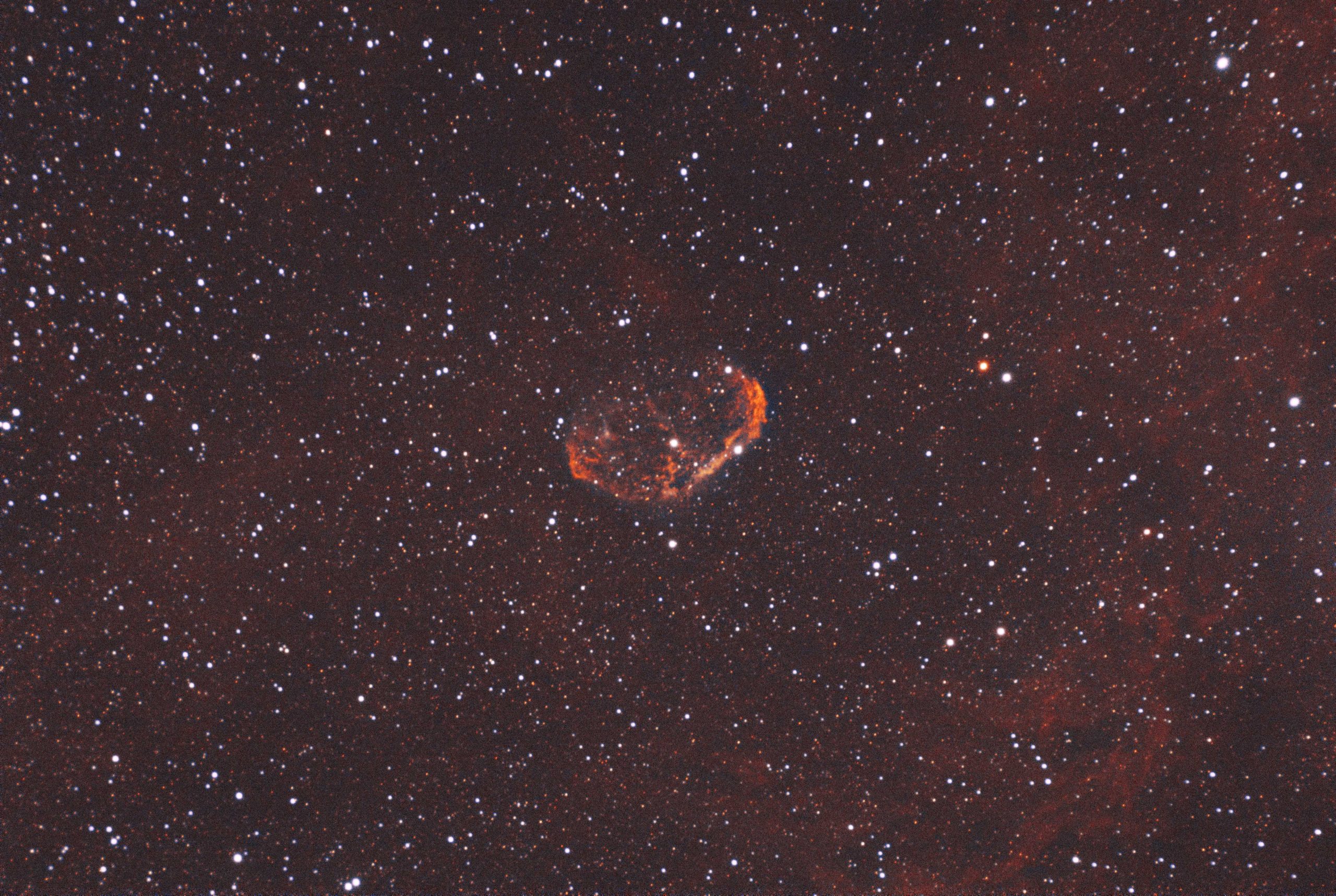NGC 6888 – Crescent Nebula

The image above results from poor guiding with many 5-minute subs rejected; only 55 minutes of data were used to make this image. The Oiii in the nebula is hardly visible because of the lack of data.
Information about the Nebula
NGC 6888, also known as the Crescent Nebula, is a stunning emission nebula in the Cygnus constellation. It is approximately 5,000 light-years away from Earth and spans approximately 25 light-years in diameter. The Crescent Nebula is believed to be the result of a massive star that has shed its outer layers in a violent supernova explosion, leaving behind a hot and ionized central star.
The Crescent Nebula gets its name from its distinctive crescent shape, which is visible in long-exposure images. The nebula is a beautiful and intricate sight, with its intricate filaments of glowing gas and dust illuminated by the intense radiation of the central star.
NGC 6888 is an active star-forming region with a cluster of newly formed stars embedded within its core. These stars are responsible for ionizing the surrounding gas, causing it to emit light in various colours. The pinkish-red hue of the nebula is due to the emission of hydrogen gas, while the blue and green colours come from the emission of oxygen and sulfur gases, respectively.
The Crescent Nebula is a popular target for amateur and professional astronomers alike. It’s easy to see why, with its intricate detail and vibrant colours making it a stunning subject for long-exposure photography. With the right equipment and technique, even amateur astronomers can capture breathtaking images of this celestial wonder.
Beyond its aesthetic beauty, NGC 6888 is also a fascinating object for scientific study. Astronomers study the nebula to learn more about the processes that lead to new stars and planetary systems forming. By analyzing the properties of the gas and dust within the nebula, scientists can gain insight into the physical conditions that give rise to new stars and planets.
In addition, NGC 6888 is a prime target for studying the effects of massive stars on their environment. The intense radiation and strong stellar winds of the central star are thought to have shaped the surrounding gas and dust into their distinctive crescent shape. By studying this process in more detail, astronomers can better understand how massive stars evolve and interact with their surroundings.
In conclusion, NGC 6888, the Crescent Nebula, is a beautiful and intriguing object in the night sky. Its intricate details and vibrant colours make it a favourite among astrophotographers, while its scientific importance makes it a valuable object for scientific study. Whether you’re an amateur astronomer or a professional scientist, NGC 6888 is a must-see object in the night sky.
